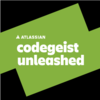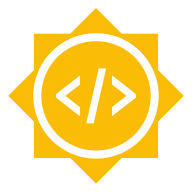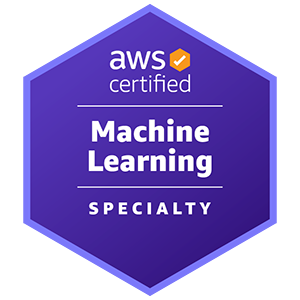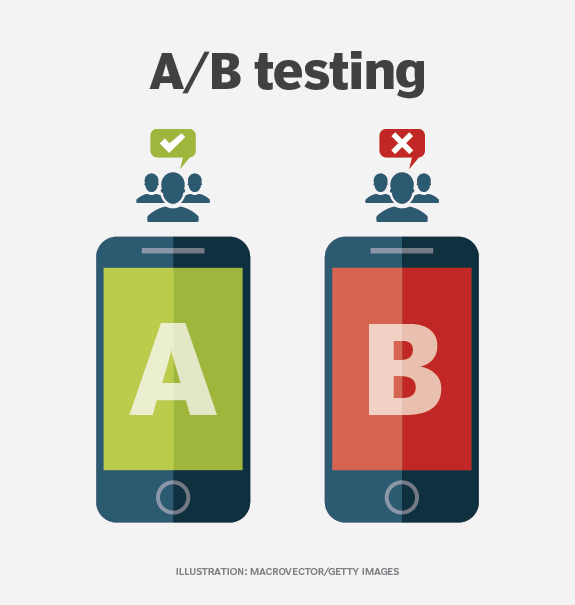My notes
The notes I've been taking thorought my studies on different subjects.

re:Invent 2023
08 Dec 2023
I couldn't really imagine a better way of saying goodbye to 2023 than diving headfirst into the tech wonderland that was AWS re:Invent. From November 28 to December 2 2023, Las Vegas transformed into a hub of innovation, and I found myself right in the middle of it all.
re:Invent 2023
08 Dec 2023
I couldn't really imagine a better way of saying goodbye to 2023 than diving headfirst into the tech wonderland that was AWS re:Invent. From November 28 to December 2 2023, Las Vegas transformed into a hub of innovation, and I found myself right in the middle of it all.
Atlassian Codegeist 2023
24 Oct 2023
Documentation. Every developer's Achilles heel. I can't count the number of times I've found myself switching between screens, trying to simultaneously remember what each part of my code does while documenting it.
Atlassian Codegeist 2023
24 Oct 2023
Documentation. Every developer's Achilles heel. I can't count the number of times I've found myself switching between screens, trying to simultaneously remember what each part of my code does while documenting it.
Google Summer of Code 2023
24 Aug 2023
cclib is an open source library, written in Python, for parsing and interpreting the results of computational chemistry packages. The goals of cclib include extracting data from different files, creating an interface for computational chemistry results, etc.
Google Summer of Code 2023
24 Aug 2023
cclib is an open source library, written in Python, for parsing and interpreting the results of computational chemistry packages. The goals of cclib include extracting data from different files, creating an interface for computational chemistry results, etc.
AWS Machine Learning Specialty Bite Size Recap 3/3
08 Jul 2023
A bunch of bite-size information on AI services on AWS to help with AWS Machine Learning Specialty Revision. Part 3/3
AWS Machine Learning Specialty Bite Size Recap 3/3
08 Jul 2023
A bunch of bite-size information on AI services on AWS to help with AWS Machine Learning Specialty Revision. Part 3/3
AWS Machine Learning Specialty Bite Size Recap 2/3
08 Jul 2023
A bunch of bite-size information on AI services on AWS to help with AWS Machine Learning Specialty Revision. Part 2/3
AWS Machine Learning Specialty Bite Size Recap 2/3
08 Jul 2023
A bunch of bite-size information on AI services on AWS to help with AWS Machine Learning Specialty Revision. Part 2/3
AWS Machine Learning Specialty: Bite Size Recap 1/3
07 Jul 2023
A bunch of bite-size information on AI services on AWS to help with AWS Machine Learning Specialty Revision.
AWS Machine Learning Specialty: Bite Size Recap 1/3
07 Jul 2023
A bunch of bite-size information on AI services on AWS to help with AWS Machine Learning Specialty Revision.
Solving the Problem of Overfitting
10 Nov 2021
Overfitting arises when a hypothesis function is too complex, while underfitting occurs when it's too simple. To address overfitting, we can manually select features or use regularization to reduce the weight of some terms in the function. Regularization works well when we have a lot of slightly useful features.
Solving the Problem of Overfitting
10 Nov 2021
Overfitting arises when a hypothesis function is too complex, while underfitting occurs when it's too simple. To address overfitting, we can manually select features or use regularization to reduce the weight of some terms in the function. Regularization works well when we have a lot of slightly useful features.
Multiclass Classification
16 Oct 2021
Multiclass classification is approached by expanding the definition of y to include more than two categories. This problem is divided into n+1 binary classification problems, and binary logistic regression is applied to each case to predict which class the data belongs to. The hypothesis that returns the highest value is used as the prediction.
Multiclass Classification
16 Oct 2021
Multiclass classification is approached by expanding the definition of y to include more than two categories. This problem is divided into n+1 binary classification problems, and binary logistic regression is applied to each case to predict which class the data belongs to. The hypothesis that returns the highest value is used as the prediction.
Logic Regression Model
12 Oct 2021
This post explains how to create a cost function for logistic regression that is convex and can be optimized using gradient descent. The cost function is defined in terms of the log-likelihood of the model and is derived using maximum likelihood estimation. The article also provides the formula for gradient descent and introduces more advanced optimization algorithms, such as Conjugate Gradient, BFGS, and L-BFGS.
Logic Regression Model
12 Oct 2021
This post explains how to create a cost function for logistic regression that is convex and can be optimized using gradient descent. The cost function is defined in terms of the log-likelihood of the model and is derived using maximum likelihood estimation. The article also provides the formula for gradient descent and introduces more advanced optimization algorithms, such as Conjugate Gradient, BFGS, and L-BFGS.
Classification and Representation
01 Oct 2021
This post discusses binary classification problems where y can only take on two values, 0 and 1. It explains how to use the logistic function to change the form of the hypothesis function and ensure that it returns values between 0 and 1. Iu also introduces the decision boundary and how it helps determine the class that a particular data point belongs to.
Classification and Representation
01 Oct 2021
This post discusses binary classification problems where y can only take on two values, 0 and 1. It explains how to use the logistic function to change the form of the hypothesis function and ensure that it returns values between 0 and 1. Iu also introduces the decision boundary and how it helps determine the class that a particular data point belongs to.
Multivariate Linear Regression
29 Sep 2021
Gradient descent gives one way of minimizing J. Let's discuss a second way of doing so, this time performing the minimization explicitly and without resorting to an iterative algorithm. In the Normal Equation method, we will minimize J by explicitly taking its derivatives with respect to the thetas of position j and setting them to 0.
Multivariate Linear Regression
29 Sep 2021
Gradient descent gives one way of minimizing J. Let's discuss a second way of doing so, this time performing the minimization explicitly and without resorting to an iterative algorithm. In the Normal Equation method, we will minimize J by explicitly taking its derivatives with respect to the thetas of position j and setting them to 0.
Multivariate Linear Regression
29 Sep 2021
Linear regression with multiple variables is also known as "multivariate linear regression". We now introduce notation for equations where we can have any number of input variables.
Multivariate Linear Regression
29 Sep 2021
Linear regression with multiple variables is also known as "multivariate linear regression". We now introduce notation for equations where we can have any number of input variables.
Parameter Learning
28 Sep 2021
So we have our hypothesis function and we have a way of measuring how well it fits into the data. Now we need to estimate the parameters in the hypothesis function. That's where gradient descent comes in.
Parameter Learning
28 Sep 2021
So we have our hypothesis function and we have a way of measuring how well it fits into the data. Now we need to estimate the parameters in the hypothesis function. That's where gradient descent comes in.
Model and Cost Function
26 Sep 2021
To establish notation for future, we'll use x to denote the input variables (living area in this example), also called input features, and y to denote the output or target variable that we are trying to predict (price).
Model and Cost Function
26 Sep 2021
To establish notation for future, we'll use x to denote the input variables (living area in this example), also called input features, and y to denote the output or target variable that we are trying to predict (price).
Machine Learning - Introduction
25 Sep 2021
Two definitions of Machine Learning are offered. Arthur Samuel described it as: "The field of study. that gives computer the ability to learn without being explicitly programmed". This is an older, informal definition.
Machine Learning - Introduction
25 Sep 2021
Two definitions of Machine Learning are offered. Arthur Samuel described it as: "The field of study. that gives computer the ability to learn without being explicitly programmed". This is an older, informal definition.
Predictive Models - Regression
16 May 2021
Least squares minimizes the sum of squared errors. This is the same as maximizing the likelihood of observed data if you start thinking of the problem in terms of probabilities and probability distribution functions.
Predictive Models - Regression
16 May 2021
Least squares minimizes the sum of squared errors. This is the same as maximizing the likelihood of observed data if you start thinking of the problem in terms of probabilities and probability distribution functions.
Statistic and Probability
16 May 2021
Discrete Data: integer based, often counts of some event. How many purchases did a customer make in a year? How many times did I flif heads? Continous Data: Has an infinite number of possible values. How much time did it take for a user to check out? How much rain fell on a givern day?.
Statistic and Probability
16 May 2021
Discrete Data: integer based, often counts of some event. How many purchases did a customer make in a year? How many times did I flif heads? Continous Data: Has an infinite number of possible values. How much time did it take for a user to check out? How much rain fell on a givern day?.
Data Mining
23 Apr 2021
Data Mining in Python with focus on machine learning algorithms and techniques. K-Nearest Neighbors (KNN), Principal Component Analysis (PCA).
Data Mining
23 Apr 2021
Data Mining in Python with focus on machine learning algorithms and techniques. K-Nearest Neighbors (KNN), Principal Component Analysis (PCA).
Real World Data
22 Apr 2021
Coding in Python with focus on machine learning algorithms and techniques. Confusion Matrix, Measuring Classifiers, Precision, Recall, ROC Curve, Bias and Variance, K-Fold Validation, Outliers, Unbalanced Data, SMOTE, Binning, Transforming, Encoding, Normalization.
Real World Data
22 Apr 2021
Coding in Python with focus on machine learning algorithms and techniques. Confusion Matrix, Measuring Classifiers, Precision, Recall, ROC Curve, Bias and Variance, K-Fold Validation, Outliers, Unbalanced Data, SMOTE, Binning, Transforming, Encoding, Normalization.
Machine Learning with Python, Part 2
22 Apr 2021
Coding in Python with focus on machine learning algorithms and techniques. Decision Trees, Random Forest, Ensemble Learning, CGBoost, Support Vector Machines.
Machine Learning with Python, Part 2
22 Apr 2021
Coding in Python with focus on machine learning algorithms and techniques. Decision Trees, Random Forest, Ensemble Learning, CGBoost, Support Vector Machines.
Machine Learning with Python, Part 1
21 Apr 2021
Coding in Python with focus on machine learning algorithms and techniques. Train / test split, Bayesian Methods, Naive Bayes, K-Means Clustering, Entropy.
Machine Learning with Python, Part 1
21 Apr 2021
Coding in Python with focus on machine learning algorithms and techniques. Train / test split, Bayesian Methods, Naive Bayes, K-Means Clustering, Entropy.
Machine Learning General Questions
21 Mar 2021
Machine Learning Questions - general questions usually asked on interviews.
Machine Learning General Questions
21 Mar 2021
Machine Learning Questions - general questions usually asked on interviews.
Experimental Design
21 Feb 2021
A/B Testing. A controlled experiment, usually in the context of a website. You test the performance of some change to your website (the variant) and measure conversion relative to your unchanged site (the control).
Experimental Design
21 Feb 2021
A/B Testing. A controlled experiment, usually in the context of a website. You test the performance of some change to your website (the variant) and measure conversion relative to your unchanged site (the control).